Throughout history, people have been fascinated by black animals that were often perceived to be mysterious or magical because of their colouration.
In reality, this stunning coat colour is caused by an over-development of dark colored pigment in the skin, which is a condition called melanism. If either parent carries the melanistic gene, a single litter can contain both normally coloured and melanistic babies. A lack of this same pigment causes albinism, or white, animals
In the Felidae family, many species have been recorded as having melanistic coats. The most well known are the black panthers, which can be either a leopard or a jaguar. Although their coats are black, you can still see their spots, as on this jaguar cub.
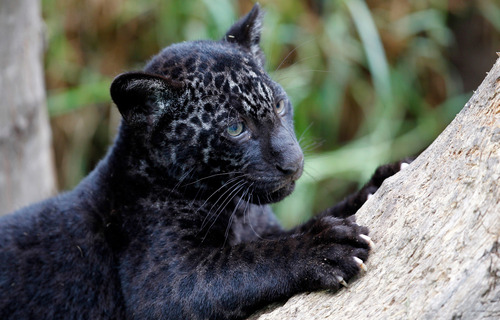
Coat colours and markings are important in preventing a hunting cat from being seen, and black animals blend into the shadows. Melanistic leopards and jaguars are more often recorded in humid tropical forests where closed tree canopies prohibit light from reaching the forest floor.
While stripes, spots or blotches help cats disappear in dappled light, the unmarked fur of desert animals helps them blend into the background of their desert homes. A black sand cat, for example, would stand out like a beacon in the Sahara.
Among the small wild cats, four South American species have a melanistic form. As well as the cat below, melanistic Oncillas, Pampas Cats and Kodkods have been reported. This is a Geoffroy’s Cat from Big Cat Rescue in Florida.
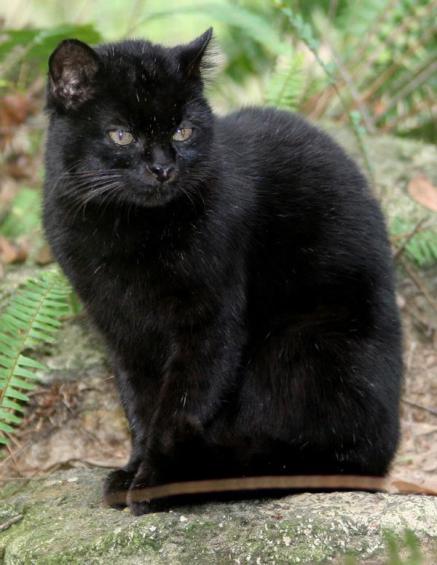
In the thick forests of Southeast Asia, melanistic Asian Golden Cats or Jungle Cats are not uncommon. The grumpy cat below is a Jungle Cat that lived at Heidelburg Zoo in Germany.
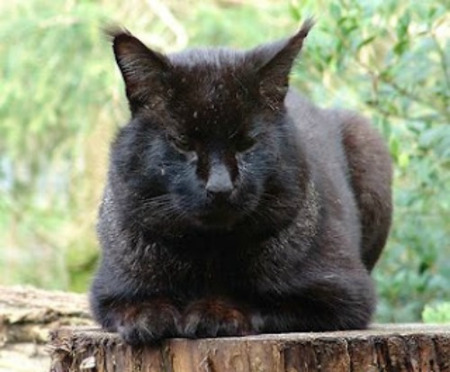
Africa also has melanistic Servals, although they are rarely seen. Servals are normally classed as cats of the marsh in grassland areas, but with a coat colour like this, the cat below must live in a higher, more thickly forested area.
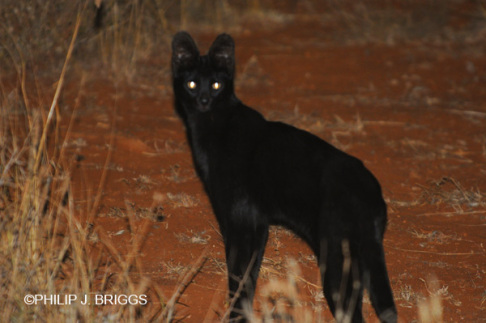
There has never been a recorded instance of a melanistic cougar anywhere throughout their range in North or South America. These cats obviously evolved to hunt in more open areas, and their colouring matches that of the mountain slopes and rocky areas they inhabit.
Bobcats are another animal of open areas, but they can be found in every type of habitat. Their colouring of dark spots on a light background is well known, but in Florida where the vegetation in the Everglades was once impenetrable, 3 black bobcats have been reported in the last 100 years. This photo was taken by US F&G, and the bobcat was released unharmed back into the wild.
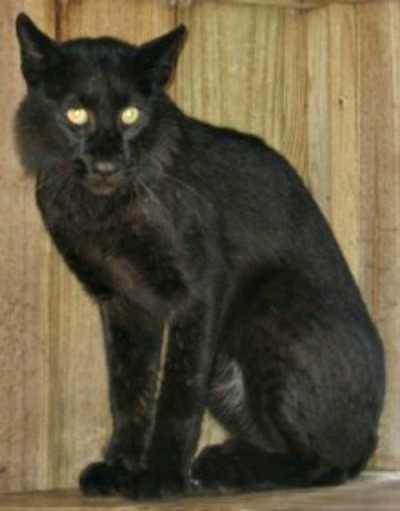
And of course the most familiar black cat species is our beloved domestic cat. I’m sure many of our readers have been owned by their very own little black panther!
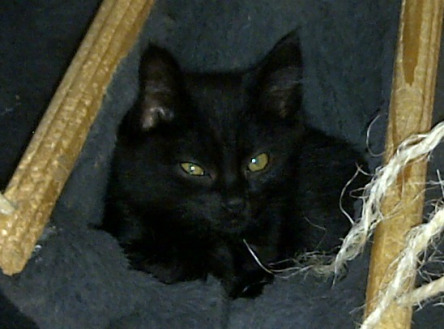
Callie
Beautiful Black Cats, ALL! My mom and I captured, neutered and saved a wonderful little black cat and his family. We returned them to their home in the woods behind my mom’s house. We see them daily, and Lucky, our little black friend is now tame enough to pet! We love him, and hope he comes around forever! We’ve ALSO just bought him and his mates an outdoor heated home, for the winter. He hasn’t used it YET, but his old, male companion, (the Daddy?) has used it several times, so we’re confidant he’ll be using it soon!
Thanks for yet another wonderful article, Pat!